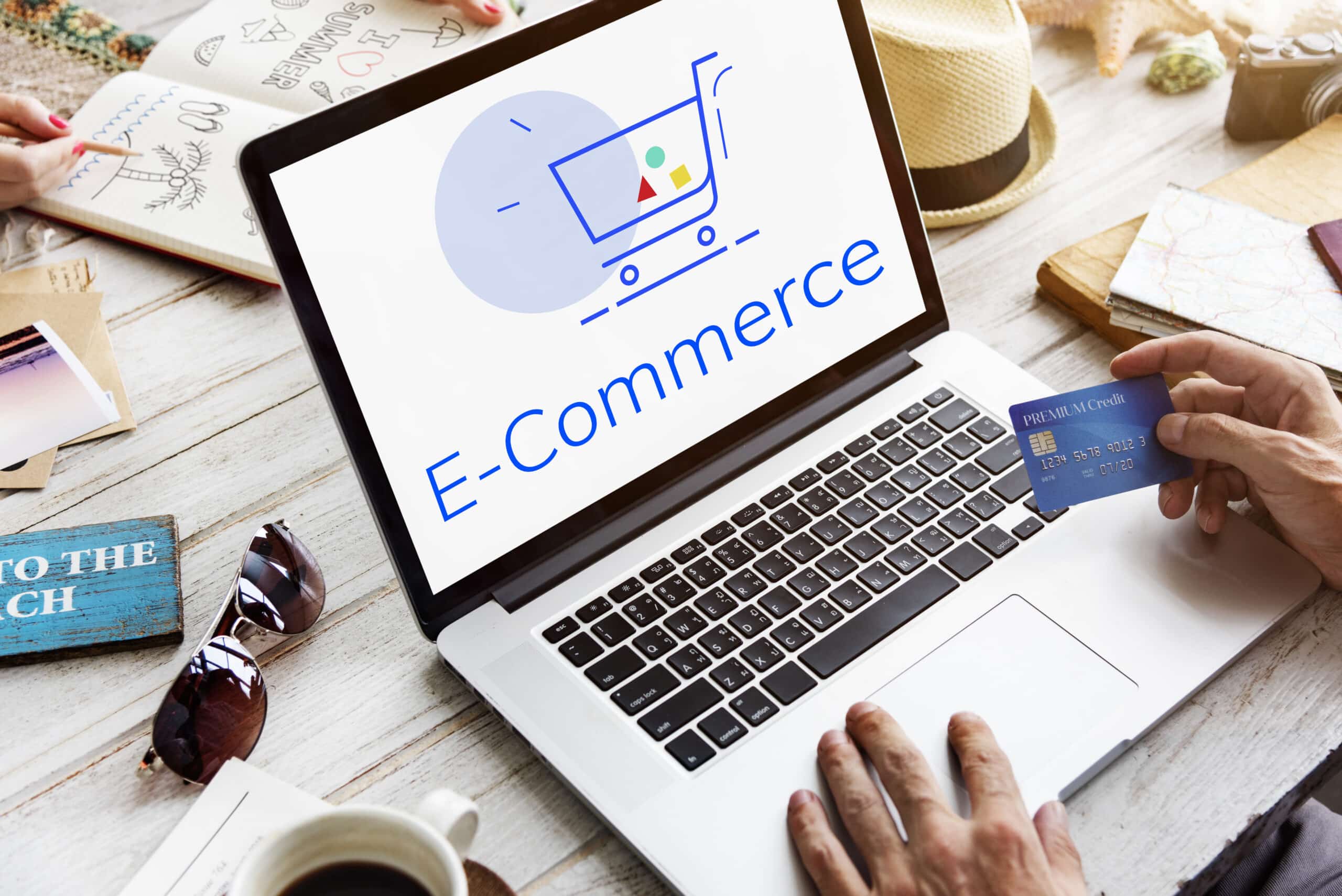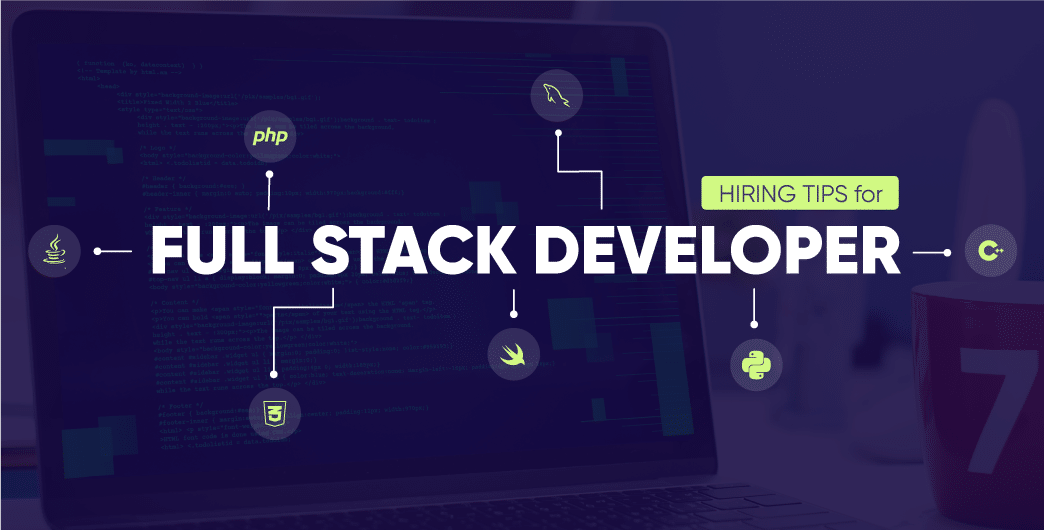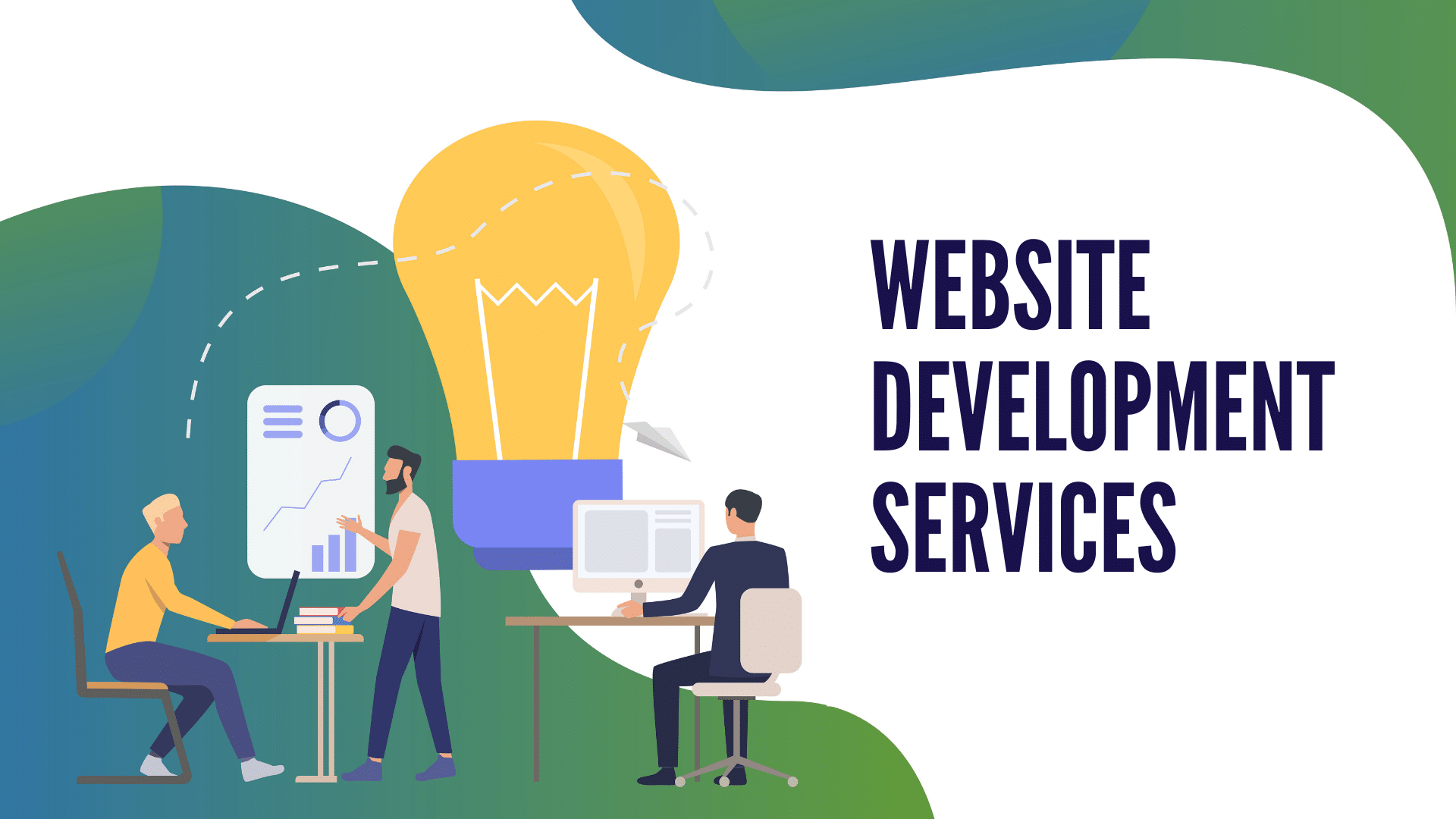In the digital age, the world of commerce is no longer confined to brick-and-mortar stores. The advent of e-commerce has revolutionized how businesses reach customers, offering a seamless and scalable way to sell products and services online. However, for e-commerce businesses to be successful, they need more than just a website; they need a well-designed, user-friendly, and optimized e-commerce website that converts visitors into paying customers.
This article explores the role of e-commerce web development in boosting online sales. We will discuss how e-commerce web development directly impacts your sales, the key features of a successful e-commerce website, and why investing in professional e-commerce web development is crucial for your business’s growth.
Key Takeaways
E-commerce Web Development Drives Sales
The design, functionality, and performance of an e-commerce website play a critical role in boosting online sales. A well-developed site enhances user experience, improves navigation, and makes it easier for customers to complete purchases, all of which lead to increased conversions.
User Experience (UX) is Crucial
A user-friendly, intuitive, and mobile-optimized website can significantly reduce bounce rates and cart abandonment, while improving customer satisfaction. Focus on fast load times, easy navigation, and a smooth checkout process to maximize your e-commerce site’s potential.
Mobile Optimization is a Must
With the majority of consumers shopping on mobile devices, ensuring your e-commerce site is mobile-friendly is essential. A responsive design, touch-friendly interfaces, and quick load times on mobile devices directly impact customer engagement and sales.
SEO Optimizes Visibility and Increases Traffic
Effective SEO practices, such as proper site structure, keyword optimization, and quality content, help your e-commerce website rank higher in search engine results, attracting more organic traffic and potential customers.
Security Builds Trust
For customers to feel confident making purchases, your e-commerce website must offer secure payment gateways, SSL certificates, and transparent privacy policies. Building trust through these security features reduces the likelihood of cart abandonment and increases conversion rates.
The Significance of E-commerce Web Development

E-commerce web development is the process of designing, developing, and maintaining an online store that allows businesses to sell their products or services directly to consumers. Unlike traditional retail stores, e-commerce websites operate in a virtual environment, which means the web development must be intuitive, fast, and functional to meet the needs of both the business and the consumer.
Web development is more than just coding; it involves creating an experience that encourages customers to explore, browse, and make purchases. It involves integrating various functionalities, such as product search, inventory management, secure payment processing, and shipping solutions. When done correctly, a well-developed e-commerce website can significantly boost online sales by improving the user experience, increasing conversions, and building customer loyalty.
Improved User Experience (UX)
One of the most important factors that can boost online sales is providing an excellent user experience (UX). E-commerce web development focuses on creating a seamless, intuitive, and enjoyable browsing experience for users. With a clean, user-friendly interface, visitors can easily navigate through your website, find products, and make purchases with minimal friction.
Key elements of a good user experience include:
- Responsive Design: A website that works well on all devices—desktops, tablets, and smartphones—is essential for attracting a larger audience. A responsive design adjusts the layout to fit the screen size of the device, making it easier for customers to browse and shop from anywhere.
- Easy Navigation: Intuitive navigation and well-organized product categories help users find what they’re looking for without frustration. A search bar with filters and sorting options can further improve the shopping experience.
- Fast Load Times: Slow website loading speeds can cause users to abandon their carts and leave your site altogether. A fast website improves customer satisfaction and encourages them to complete their purchases.
Mobile Optimization
With the increasing use of smartphones for online shopping, mobile optimization is no longer optional—it’s a necessity. E-commerce websites that are optimized for mobile devices see better engagement, reduced bounce rates, and higher conversion rates. An e-commerce website that is mobile-friendly ensures that users can browse and shop with ease, regardless of the device they use.
Mobile optimization involves:
- Mobile-Friendly Design: A layout that adapts to smaller screens without compromising the usability or design.
- Touchscreen Compatibility: Easy-to-use buttons and clickable areas for touch devices.
- Fast Loading on Mobile: Optimizing images, minimizing scripts, and using faster hosting services to ensure smooth browsing on mobile.
Enhanced Product Discovery and Searchability
Effective e-commerce web development includes powerful search and filtering capabilities, making it easier for potential customers to find what they’re looking for. With well-structured product categories and advanced filtering options (by size, color, price, etc.), you can help users narrow down their choices and discover the products that best match their needs.
Advanced features include:
- Search Bars: Easy-to-use search functionalities that allow users to find products quickly by typing in keywords.
- Filters: Customizable filters for sorting products by various attributes like price range, size, and color.
- Product Recommendations: Using AI-driven algorithms, product recommendation systems suggest items based on previous purchases or browsing history, leading to higher conversion rates.
Security and Trustworthiness
Trust is a key factor in online shopping. A customer is far more likely to make a purchase if they feel that their personal and payment information is secure. An essential part of e-commerce web development is integrating secure payment gateways and displaying security certifications on your site to reassure customers that their data is safe.
Key security measures include:
- SSL Certification: Secure Socket Layer (SSL) encryption ensures that all data transmitted between the customer and your website is encrypted and safe from hackers.
- Secure Payment Gateways: Integrating payment systems like PayPal, Stripe, or other trusted payment processors adds another layer of trust for your customers.
- Privacy Policies and Return Policies: Display clear and transparent policies related to privacy, returns, and refunds to foster customer confidence.
Optimized Checkout Process
A complicated or lengthy checkout process is a major barrier to online sales. E-commerce web development plays a pivotal role in streamlining the checkout process to reduce cart abandonment and improve conversion rates. The goal is to make the checkout process as quick and easy as possible without sacrificing security.
Effective strategies include:
- Guest Checkout: Allow customers to make purchases without requiring them to create an account, which reduces friction during the checkout process.
- Multiple Payment Options: Offering various payment methods, including credit cards, PayPal, and digital wallets, increases the likelihood of completing a sale.
- Progress Indicators: Displaying a progress bar that shows the steps of the checkout process helps customers understand where they are in the process and how much longer it will take.
SEO Optimization

E-commerce websites need to be optimized for search engines to ensure they rank well in search results. This involves optimizing your site structure, metadata, and content to make it easier for search engines like Google to index and rank your pages. By enhancing your SEO, you can increase organic traffic to your website, resulting in higher sales.
Important SEO practices include:
- Keyword Optimization: Research and use relevant keywords in your product descriptions, blog posts, and category pages.
- Meta Tags: Use effective meta titles and descriptions for each page to improve your search engine visibility and click-through rates.
- Alt Text for Images: Use descriptive alt text for images to help search engines understand what your images are about and increase visibility in image searches.
- High-Quality Content: Regularly updating your blog with valuable content related to your products or industry can boost your SEO rankings.
Customer Support and Engagement
In today’s competitive e-commerce landscape, customer support is crucial for retaining customers and driving repeat sales. E-commerce web development can integrate live chat, chatbots, and support ticket systems to provide customers with timely assistance.
Key features to enhance customer support:
- Live Chat: A live chat function allows customers to ask questions and receive real-time assistance while shopping.
- Chatbots: AI-powered chatbots can provide instant answers to common customer inquiries, saving time for both customers and your support team.
- Help Center: A comprehensive FAQ section or knowledge base can address common issues, such as order tracking, product returns, and shipping information.
Data Analytics and Reporting
Data is key to improving sales performance. With the right e-commerce web development tools, businesses can track customer behavior, identify trends, and measure the effectiveness of marketing campaigns. Integrating analytics tools allows business owners to make data-driven decisions that can boost conversion rates and overall sales.
Essential analytics include:
- Conversion Tracking: Monitor how many website visitors complete purchases, enabling you to optimize the sales funnel.
- Customer Segmentation: Analyze customer data to identify specific segments, such as repeat buyers, new customers, or high-spending customers.
- Sales Reporting: Generate detailed reports on sales performance, top-selling products, and revenue streams to adjust marketing strategies.
Certainly! Here are several different topics related to e-commerce web development that can be explored in detail. These topics can help provide insights into various aspects of e-commerce web development and its impact on business growth:
The Importance of User Experience (UX) in E-commerce Web Development
- Overview: How the design and usability of an e-commerce website influence customer satisfaction, retention, and sales.
- Key Areas to Explore:
- The role of responsive design in improving UX.
- How a simplified navigation system enhances product discovery.
- The impact of intuitive product pages on user behavior.
- Optimizing website speed to prevent user frustration and cart abandonment.
- How improving UX leads to higher customer lifetime value (CLV).
Mobile E-commerce Development: Why Your Store Needs to Be Mobile-Friendly
- Overview: Discussing the rising trend of mobile commerce and why businesses need to focus on mobile-optimized e-commerce websites.
- Key Areas to Explore:
- Statistics showing the growth of mobile commerce.
- Differences between mobile and desktop e-commerce experiences.
- Techniques for mobile optimization (e.g., responsive design, mobile-first indexing).
- How mobile optimization can reduce bounce rates and increase conversions.
- Importance of mobile payment solutions (e.g., Google Pay, Apple Pay).
How E-commerce Web Development Can Improve SEO and Drive Traffic
- Overview: Understanding how technical aspects of e-commerce web development influence SEO and how it can help increase organic traffic.
- Key Areas to Explore:
- Importance of proper URL structure and clean code for better search engine indexing.
- Optimizing product descriptions, images, and meta tags for search engines.
- How site speed, mobile responsiveness, and security contribute to SEO rankings.
- The role of schema markup and rich snippets in e-commerce SEO.
- SEO strategies for e-commerce (e.g., keyword optimization, content marketing, backlinking).
E-commerce Web Development for International Markets: Localization and Globalization
- Overview: The challenges and best practices for expanding an e-commerce website to cater to international markets.
- Key Areas to Explore:
- The difference between localization and globalization in e-commerce.
- Tools and strategies for language translation and cultural adaptation.
- Addressing international shipping, taxation, and currency differences.
- The role of international SEO in attracting global customers.
- How to tailor marketing campaigns for various countries and regions.
The Role of AI and Machine Learning in E-commerce Web Development
- Overview: How artificial intelligence and machine learning technologies are reshaping the e-commerce experience.
- Key Areas to Explore:
- Personalized product recommendations using machine learning.
- AI-driven chatbots for customer support and sales assistance.
- How AI can improve inventory management and demand forecasting.
- The use of image recognition for visual search on e-commerce websites.
- How AI can enhance customer segmentation and marketing strategies.
E-commerce Security Best Practices: Protecting Your Website and Customers
- Overview: The importance of implementing robust security measures to protect customer data and build trust in e-commerce websites.
- Key Areas to Explore:
- Importance of SSL certificates for encryption and customer data protection.
- Secure payment gateways and PCI-DSS compliance.
- Two-factor authentication for customer accounts and admin access.
- The role of CAPTCHA and bot protection in preventing fraud.
- Best practices for protecting customer data from breaches and hacks.
The Future of E-commerce Web Development: Trends to Watch in 2025 and Beyond
- Overview: Discussing the emerging trends and technologies that are expected to shape the future of e-commerce websites.
- Key Areas to Explore:
- The rise of voice search and voice commerce in e-commerce.
- The role of augmented reality (AR) and virtual reality (VR) in product visualization.
- Progressive web apps (PWAs) and how they improve the mobile shopping experience.
- The integration of social commerce (shopping via social media platforms).
- The evolution of payment methods (cryptocurrency, biometric payments, etc.).
How Custom E-commerce Development Can Help Your Business Stand Out
- Overview: Why custom web development might be the best choice for businesses with unique needs or looking for a competitive edge in the e-commerce space.
- Key Areas to Explore:
- The benefits of a tailor-made e-commerce website vs. using platforms like Shopify or WooCommerce.
- Flexibility in integrating third-party tools and applications.
- How custom development allows for a unique user interface (UI) and user experience (UX).
- Scalability and customization options for growing businesses.
- Examples of successful custom e-commerce websites and their impact on sales.
The Impact of Payment Gateways on E-commerce Conversion Rates
- Overview: Analyzing how the choice of payment gateways can affect e-commerce sales and customer trust.
- Key Areas to Explore:
- Common payment gateways (e.g., PayPal, Stripe, Square) and their pros/cons.
- Offering multiple payment options to cater to a global audience.
- How the payment process can be optimized to reduce cart abandonment.
- The importance of ensuring secure and seamless transactions.
- The role of mobile wallets (Apple Pay, Google Pay) in improving conversion rates.
Building an Effective E-commerce Marketing Strategy Using Your Website’s Features
- Overview: Exploring how a well-designed e-commerce website can work hand-in-hand with marketing strategies to boost online sales.
- Key Areas to Explore:
- Integrating email marketing with your e-commerce platform for automated campaigns.
- How e-commerce websites can enhance content marketing (blogs, guides, video tutorials).
- The importance of referral programs and affiliate marketing for growing traffic and sales.
- Using customer reviews and ratings to build social proof and trust.
- Retargeting ads and how to set up remarketing strategies through your website.
The Importance of Analytics and Tracking Tools in E-commerce Web Development

- Overview: How integrating analytics tools can provide valuable insights that lead to better decision-making and more effective strategies to increase sales.
- Key Areas to Explore:
- The role of Google Analytics in tracking user behavior, sales funnels, and conversion rates.
- Setting up custom tracking to measure the effectiveness of marketing campaigns.
- Using heatmaps and session recordings to improve user experience and increase conversions.
- Implementing A/B testing to optimize website performance.
- The importance of customer segmentation and personalized marketing.
E-commerce Web Development for Subscription-Based Businesses: Key Features and Best Practices
- Overview: How e-commerce platforms can be developed to cater to subscription-based models and recurring payments.
- Key Areas to Explore:
- Setting up recurring billing systems and payment gateways for subscriptions.
- Managing customer data and subscriptions through the backend.
- The importance of offering flexible subscription models (e.g., monthly, quarterly, yearly).
- Designing personalized and engaging subscription experiences.
- Leveraging analytics for subscription renewal and churn rate management.
How to Build a Scalable E-commerce Website: Preparing for Growth
- Overview: Understanding how to design and build an e-commerce website that can scale as your business grows.
- Key Areas to Explore:
- The importance of choosing the right e-commerce platform (custom vs. hosted solutions).
- Using cloud hosting to manage large amounts of traffic and data.
- Scalability features to include: multi-store management, regionalization, and multi-currency support.
- Planning for increased product catalog size and user volume.
- How integrating modular features and APIs helps scalability.
E-commerce Web Development for B2B Businesses: Tailoring Your Website for Wholesale Sales
- Overview: Discussing the unique needs of B2B e-commerce websites and how to develop them for wholesale businesses.
- Key Areas to Explore:
- Custom pricing tiers and bulk discount options for B2B customers.
- Building secure customer portals and account management systems.
- Integration with Enterprise Resource Planning (ERP) systems for better inventory management.
- Offering wholesale ordering tools and a streamlined checkout process.
- How B2B e-commerce sites can facilitate repeat orders and long-term relationships.
How to Implement a Custom E-commerce Shopping Cart with PHP and MySQL
- Overview: Building a custom shopping cart system for an e-commerce website using PHP and MySQL to store and manage products, quantities, and user information.
- Key Areas to Explore:
- Introduction to PHP sessions and cookies for managing cart data.
- Writing SQL queries to add, remove, and update items in the cart.
- Managing cart persistence across pages and sessions.
- Displaying cart content dynamically and calculating totals.
- Code Example:
phpCopy code<?php
session_start();
// Add product to cart
if (isset($_GET['add_to_cart'])) {
$product_id = $_GET['add_to_cart'];
$quantity = 1; // Default quantity
if (isset($_SESSION['cart'][$product_id])) {
$_SESSION['cart'][$product_id] += $quantity;
} else {
$_SESSION['cart'][$product_id] = $quantity;
}
}
// Remove product from cart
if (isset($_GET['remove_from_cart'])) {
$product_id = $_GET['remove_from_cart'];
unset($_SESSION['cart'][$product_id]);
}
// View cart
if (isset($_SESSION['cart'])) {
echo '<ul>';
foreach ($_SESSION['cart'] as $product_id => $quantity) {
echo "<li>Product ID: $product_id, Quantity: $quantity</li>";
}
echo '</ul>';
} else {
echo 'Your cart is empty.';
}
?>
How Integrating Social Media with Your E-commerce Website Can Drive Sales
- Overview: The benefits of integrating social media into your e-commerce strategy for customer engagement and sales growth.
- Key Areas to Explore:
- Social login features and how they simplify the purchasing process.
- The role of social media platforms in driving traffic to your e-commerce site.
- How to create shoppable posts on platforms like Instagram and Facebook.
- Using user-generated content and reviews to build social proof.
- Implementing social sharing features on product pages to encourage viral marketing.
The Role of E-commerce Web Development in Enhancing Brand Identity
- Overview: How the design and development of an e-commerce website can reflect and strengthen your brand’s identity.
- Key Areas to Explore:
- Custom design and branding consistency (logos, colors, typography).
- Aligning the website’s aesthetic with brand values and target audience.
- The importance of user-centric design and its role in establishing a positive brand reputation.
- How storytelling through design elements can enhance brand engagement.
- Case studies of e-commerce brands that have successfully used web development to reinforce their brand identity.
E-commerce Conversion Rate Optimization (CRO): Techniques and Best Practices
- Overview: How e-commerce web development can be optimized to improve conversion rates and maximize sales.
- Key Areas to Explore:
- The importance of A/B testing for web design, CTAs (calls-to-action), and content.
- Streamlining the checkout process to reduce cart abandonment.
- Using trust signals (like reviews, testimonials, and security badges) to increase consumer confidence.
- The role of micro-interactions in boosting user engagement and conversions.
- Leveraging heatmaps and session recordings to identify pain points in the user journey.
Read Also :- https://orbitittech.com/what-php-web-development-and-why-should-you-use-it/
Conclusion
E-commerce web development is a crucial investment for businesses looking to increase online sales. From creating a smooth and intuitive user experience to optimizing for mobile, ensuring fast load times, and incorporating SEO best practices, every element of your website plays a role in driving sales. Moreover, integrating security features, a simple checkout process, and strong customer support can make a significant difference in your conversion rates and overall success.
FAQs
What is the role of e-commerce web development in boosting sales?
E-commerce web development ensures that your website is user-friendly, fast, mobile-optimized, and secure. By providing an excellent online shopping experience, it can increase conversions, reduce cart abandonment, and drive repeat business.
How do responsive designs affect e-commerce sales?
Responsive designs ensure that your website looks and works well across all devices, including smartphones, tablets, and desktops. This improves user experience and accessibility, leading to higher engagement and sales.
Why is mobile optimization important for online sales?
Mobile optimization allows your website to function smoothly on mobile devices, where many users make purchases. It enhances the shopping experience, reduces bounce rates, and ultimately increases sales.
4. How does SEO contribute to higher sales in e-commerce?
SEO increases your website’s visibility in search engine results, driving organic traffic. Better SEO practices help attract more visitors, which can result in more conversions and higher sales.
What security features should an e-commerce site have?
An e-commerce website should have SSL encryption, secure payment gateways, and clear privacy policies to protect customer data and build trust.
What is the impact of a streamlined checkout process on sales?
A simplified and quick checkout process reduces friction, minimizes cart abandonment, and leads to higher conversion rates, thereby boosting sales.
How can customer support features enhance sales?
Live chat, chatbots, and accessible customer support make it easier for customers to get assistance quickly, improving satisfaction and increasing the likelihood of completing a purchase.




